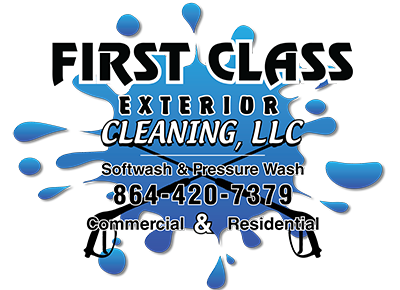DIY Pressure Washing: As with all houses, the exterior will begin to age and deteriorate as time passes. The exterior, in particular, is subjected to pollutants and dust from the outside. That is when pressure washing comes to the rescue, restoring that dull-looking house to its former glory.
Although some specialists and firms offer pressure washing services, few people prefer to explore and experiment themselves. Yes! Instead of seeking outside assistance, a few people choose to DIY, despite the risks that pressure washing entails. But no matter what, the dangers and risks are most likely the first things to consider before trying it out yourself.
We will go through the perils of pressure washing a house in more detail later. But for those who do not know what pressure washing is, we are here to explain it to you.
WHAT IS PRESSURE WASHING?
Pressure washing, as the name implies, entails cleaning with a high-pressure water stream. You can use it to clean the external bodies of surfaces or things such as houses, boats, cars, and buildings. It aids in reducing the contact of any allergens; that may be triggered by dirt and mold, alongside beautifying the exterior.
WHAT CAN WE REMOVE WITH THE HELP OF A PRESSURE WASHER?
Pressure washing can effectively remove various grimes and other stuff from any façade, including the following:
- Molds,
- Sludge,
- Dust,
- Filth,
- Chewing Gum,
- Mildew,
- Deck Stain,
- Loose Paint,
- Oil or Grease and many others.
DANGERS OF USING DIY PRESSURE WASHING:
As previously stated, a small number of people decide to try this approach on their own without comprehending the dangers that it carries. Whatever it may appear to you right now, like oh yeah, it only requires water to spray and what else! STOP and re-think. Here is a list of hazards you may encounter if you try to hold that pressure washer in your hands.
INJURIES DUE TO HIGH PRESSURE:
* THE USE OF CHEMICALS AND INFECTIONS:
A pressure washer effuses between 1300 – 2000 or more pounds per square inch of pressure, which is a lot to begin. But a garden hose only emits 50 PSI. Given these statistics, you may have already realized that if you try it yourself, how deadly it can get. It is difficult to withstand such pressure. And if you lose control, it can slash through your flesh, damage your tissues, cause eye injuries, lacerations, abrasions, and much more.
Pressure Washing does include the use of chemicals. And if the water stream goes down into your tissue by accident, it might cause bacterial infections without your knowledge. The illness may not always manifest itself immediately away, which is a significant cause for concern because it might progress to a critical state before you realize it. It does not stop with infections; in some cases, it may lead to the need for amputations. If a bruise is not spotted and treated immediately, a seemingly insignificant injury or cut could land you in the hospital for operations, if not a permanent impairment. And it may take months for healing.
* DAMAGES THROUGH NOZZLES:
In a pressure washer, the nozzles are in charge of deciding and aiming at a specific direction or even velocity. It is beneficial for cleaning and accessing hard-to-reach surfaces or corners. Roughly six nozzles are being the most typically utilized. Each spout comes in use for various angles, including 0°, 15°, 25°, 40°, 65°, and others. These nozzles have colors attached to them. For example, a black nozzle indicates a 65-degree angle, whereas a red nozzle indicates a 0-degree. Though all of the tips are potentially hazardous, those with a 0° angle pose the most risk. These nozzles come as handy for restricted regions. Hence, apply full pressure to a single point. You may suffer severe to crucial injuries to that body part or tissue if you accidentally get struck by one stream aimed at you.
* THE PROCESS OF REMOVING MOLDS MAY TURN OTHERWISE:
PSI may exceed top limits as high as 2000 or even higher, as previously indicated. But least do we know that the upper-end limit can excavate the exterior of the wood or the house. It can cause cracks in the house foundation, enabling water to leak into your home. If the water does not make its way to the inside of the house, it may become trapped in a hole, causing molds to grow or stains to form.
* ELECTRIC SHOCKS:
Pressure washing uses water and electricity in tandem during the procedure. The majority of pressure washers come with power cables that are 20-30 feet long. They are more likely to develop cracks that can result in a fatal electric shock or an electric fire if water comes into contact with any of them.
*. DAMAGES TO THE EXTERIORS OR INTERIORS THAT YOU INTENDED TO BEAUTIFY:
Yes! You read that correctly: a thing you expected to utilize to change the appearance of your home can turn out to be altogether different. If you do not apply even pressure or approach too close while spraying it on your house, the seals, paints, wood, or surface may fade, chip off, or shatter.
* DAMAGES TO THE WINDOWS:
A window installed at your home may not withstand a heavy stream of water pressure. Because we are not professionals, we may overlook this portion, causing us to lose those glass windows in the event of a blast. It could result in injuries as the shattered glass pieces could fly and damage you in the interim.
SAFETY TIPS:
To avoid any misfortune, consider the following safety tips:
- Always wear protective suits such as gloves, boots, safety glasses, long pants,
- Do not go up too high to clean as you may fall,
- Be careful about your surroundings and always keep a friend by your side to see approaching vehicles while you pressure wash the house,
- Never use Nozzle’s with 0 degrees on your own,
- Look through the manual carefully and follow it as instructed.
TAKEAWAY:
Always try to consider hiring a professional for such a risky endeavor. But if hiring specialists is out of your budget, you may consider doing it yourself. However, bear in mind the safety tips listed above, as nothing is more important than your health.
DIY PRESSURE WASHING | Blog Article | First Class Exterior Cleaning, LLC | June 25, 2021, | All Rights Reserved.
Author: SEO After Coffee, Greenville SC

